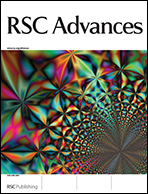Three different chemical modification routes of wood cellulose fibers were studied to develop environmentally friendly film-forming materials. Cellulose fibers were modified via the periodate oxidation and were further derivatized using either chlorite oxidation, bisulfite addition or reductive amination with taurine, which resulted in dicarboxylic acid cellulose (DCC), α-hydroxy sulfonic acid cellulose (HSAC) or taurine cellulose (TC), respectively. The film-forming properties of the modified cellulose materials were investigated using a solvent-casting method, and the mechanical and barrier properties of the films were measured. All of the films exhibited tensile strengths and moduli comparable with those of synthetic polymers, such as high-density polyethylene, poly(ethylene terephthalate) and poly(vinyl chloride). The HSAC film exhibited the best mechanical properties, with a tensile strength and modulus of 47.0 MPa and 9.6 GPa, respectively. All of the films also exhibited higher water vapor barrier properties than cellophane. The DCC film also had excellent grease barrier properties.

You have access to this article
 Please wait while we load your content...
Something went wrong. Try again?
Please wait while we load your content...
Something went wrong. Try again?


 Please wait while we load your content...
Please wait while we load your content...